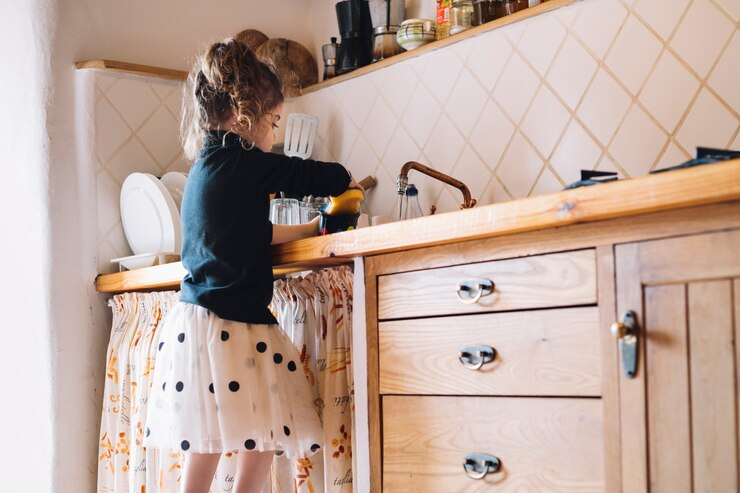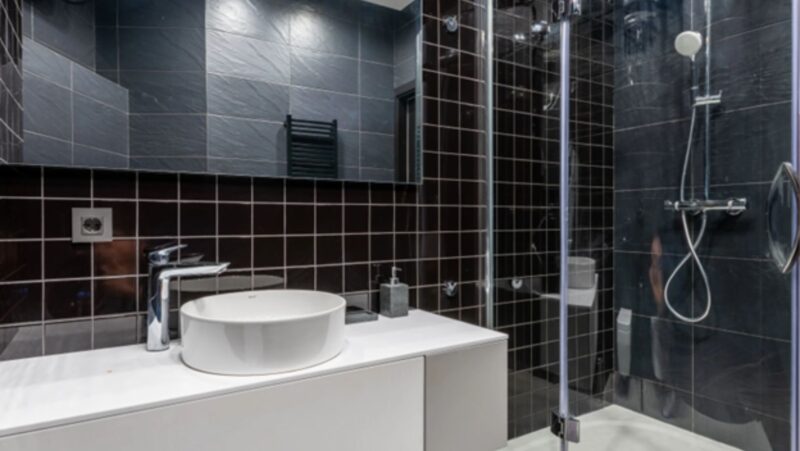
As the heart of the home, the kitchen is more than just a place to prepare meals. It’s a space where families gather, children learn, and memories are made.
In this article, we’ll explore how to design a kitchen that is not only functional and safe but also a warm and inviting space for the whole family. Whether you’re planning a remodel or just looking for ways to make your kitchen more family-friendly, we’ve got you covered. Let’s dive in!
What Constitutes a Family-Friendly Kitchen?
Firstly, a family-friendly kitchen should be designed with safety in mind. This means choosing appliances with safety locks, installing cabinets and drawers that are easy to open and close, and ensuring that sharp objects and dangerous substances are stored out of reach of children.
Another key aspect of a family-friendly kitchen is ensuring it remains a clean and pest-free haven. Regularly clean surfaces, store food in sealed containers, and promptly dispose of waste to prevent pests from being attracted to your kitchen. Implementing these practices not only promotes health and safety but also keeps the kitchen a comfortable space for the entire family.
Moreover, functionality is key. A family-friendly kitchen should have plenty of storage space to keep everything organized and clutter-free. It should also have a layout that allows for easy movement and accessibility.
For example, the cooking area should be easily accessible to adults, while a lower countertop could be designed for children to help with meal preparation.
What Are Some Essential Features of a Family-Friendly Kitchen?
When it comes to creating a family-friendly kitchen, there are several essential features that can make the space more functional, safe, and enjoyable for everyone.
Here are some of the must-have features you should consider:
Open Layout
An open layout allows for easy movement and interaction. It’s great for keeping an eye on the little ones while preparing meals and encourages family participation in cooking.
Durable Countertops
Kitchens see a lot of action, especially in a family home. Opt for durable materials like quartz or granite for your countertops. They can withstand heavy use and are easy to clean.
| Healthy Tip: Granite countertops are valued for their durability and decorative appeal, making them a popular choice for many homeowners. Ensure proper ventilation to minimize any potential radon emissions – EPA |
Lowered Counters or Pull-Out Steps
If you have young children, consider incorporating lowered counters or pull-out steps into your design. This allows kids to safely participate in kitchen activities and fosters a love for cooking from a young age.
Appliances With Safety Features
According to NFPA Research, 53% of reported home cooking fires involved ranges or cooktops. This highlights the importance of integrating safety features in kitchen appliances to reduce the risk of fires and enhance safety for all family members, especially in households with young children.
Look for appliances with safety features such as auto shut-off stoves, lockable fridges, and dishwashers with child safety locks.
Maximizing Space in Your Family Kitchen
Maximizing space in a small family kitchen can be a bit of a challenge, but with a few clever design ideas and space-saving solutions, you can create a functional and family-friendly kitchen.
Here are some ways to make the most of your kitchen space:
Opt for Compact Appliances
A report by Research and Markets shows that the use of multifunctional appliances is a key trend driving the growth of the household cooking appliance market. Consider choosing compact or multi-functional appliances that take up less space. For instance, a combination microwave and convection oven can save counter space.
Choose a Foldable or Extendable Dining Table
If you’re short on space, a foldable or extendable dining table can be a great solution. You can fold it away when not in use, and extend it when you need more dining space.
Create an Open Floor Plan
If possible, consider knocking down a wall to create an open floor plan. This can make your kitchen feel more spacious and is great for keeping an eye on the kids while you’re cooking.
How To Make Your Kitchen Accessible for All Family Members
Creating a kitchen that’s accessible for all family members is a key aspect of designing a family-friendly space. It’s not just about making it safe and functional, but also about ensuring everyone can participate in kitchen activities, regardless of their age or abilities.
Firstly, consider the height of your countertops and cabinets. According to ADA guidelines, standard countertops are typically 36 inches high, which can be too tall for wheelchair users. For better accessibility, countertops should be between 28 and 34 inches high. This adjustment ensures that work surfaces are reachable without strain. Adjustable countertops or a pull-out step stool can make a big difference. Similarly, lower cabinets or pull-out shelves can make items more accessible.
Secondly, think about the appliances you choose. For example, side-by-side refrigerators are often easier for children and wheelchair users to access than those with a freezer on top or bottom. Also, consider installing a microwave at a lower height so it’s within easy reach for everyone.
Thirdly, consider the handles and knobs on your cabinets and appliances. Lever-style handles are generally easier to operate than knobs, especially for those with limited hand strength or dexterity.
Transform Your Kitchen into a Family Hub
Creating a family-friendly kitchen is all about balancing functionality, safety, and fun. It’s about choosing durable materials that can withstand the hustle and bustle of family life, while also ensuring the space is accessible and engaging for all family members.
Remember, every family is unique, so what works for one may not work for another. The key is to consider your family’s specific needs and lifestyle when designing your kitchen. With careful planning and thoughtful design, your kitchen can truly become the heart of your home.














